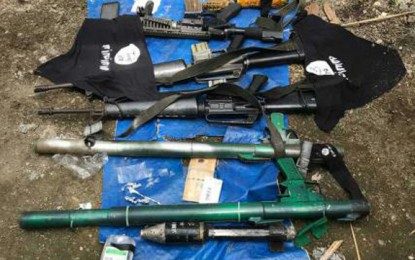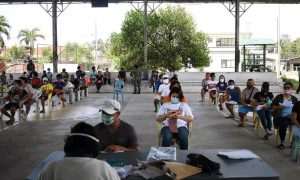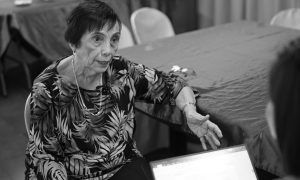Filipinos went to the polls for the national election on May 9th this year amidst a perceived threat of electoral violence and extremism coalescing in Muslim Mindanao. Although this hasn’t manifested this year, the 2025 regional elections may pose a more serious threat.
Conflict is deep-rooted in the southern Philippines. Historically, it has been the site of a long-running insurgency to (re)assert Moro nationhood on behalf of the region’s thirteen Muslim ethnolinguistic groups. The insurgency began in the early 1970s, but is embedded in the discourse of a pre-existing religious struggle that began when the Spanish first colonised the Philippines in the sixteenth century.
Since the subsequent American colonial rule, perceptions of an inherent incompatibility between the Philippines’ majority Christian and minority Muslim communities have prevailed in Manila. The Americans tried to circumvent this by incorporating Muslim elites into the Philippine state with the belief that their traditional authority over their Muslim constituencies would integrate the latter by proxy.
Although appeals to traditional authority have largely been exchanged for coercion, this relationship between national government, local government, and the population in Muslim Mindanao has persisted in the modern Philippine state. Local government positions provide a lucrative intermediary source of patronage vis-a-vis the national government, fostering oligarchy as an unfortunate side effect of efforts to govern areas that some in Manila considered ungovernable in recent decades.
Political and economic power are both at stake in local elections, and violence is often used to win or defend it. Private armed groups (PAGs) are accordingly a salient feature of political contestation in the south; in 2018, seventy two of the country’s seventy seven private armed groups were in the Autonomous Region in Muslim Mindanao (ARMM). It has also been the site of the country’s worst electoral violence. In 2009, a PAG linked to the Ampatuan clan attacked the convoy of a Mangudadatu family gubernatorial rival attempting to submit their candidacy, killing fifty eight in what became known as the Maguindanao Massacre.
Fluctuations in incident and casualty data belie claims the end of Philippines’ insurgencies is near.
Down, but not out: political violence in the Southern Philippines from 2016-2020
The government has stepped up efforts to combat PAGs, especially since the 2015 establishment of the National Task Force for the Disbandment of Private Armed Groups in the Proposed Bangsamoro and Adjacent regions. The task force announced that in 2021 alone they had disbanded fourteen central Mindanao PAGs, further claiming that only three remained. Yet it is also important for policymakers to consider potential, latent PAGs, at the fringes of which are entities like the Maute Group.
The Maute Group was originally an appendage to the Maute clan’s political endeavours before gradually morphing into a key Islamic State affiliate in the Philippines by 2016, first through the instrumental adoption of Islamic State iconography and a later consolidation driven by the allure of attention and funding. They reached their height in mid-2017 when they, together with other Islamic State affiliates such as the Isnilon Hapilon-led Abu Sayyaf faction, occupied Marawi City for five months. Yet they have stagnated since then in the face of dwindling outside funding, a growing alienation from local communities because of the Siege of Marawi, and the sustained military efforts of the Armed Forces of the Philippines.
In the context of such existential threats, officials suggested that the Maute Group posed a “definite threat” to the 2022 elections, as they might take the form of a PAG-for-hire to fill their resource vacuum. Yet this was not the case, for reasons relating to both would-be patrons and the Maute Group themselves.
For politicians, the prospect of enlisting the Maute Group as a quasi-PAG is too unsavoury even for those experienced in coercive politics, an untenable association in both the eyes of officials and local constituencies since the Siege of Marawi. For the Maute Group, they may not be as financially constrained as anticipated and thus not compelled to offer such services. Officials estimated that the Maute Group could have looted up to two billion pesos (USD39 million) in the course of occupying Marawi. This is enough for long-term financial sustainment if mounting military operations and an absence of community support don’t scupper them altogether.
Although the Maute Group used financial incentives to garner support and mobilise fighters before Marawi, they have turned to clan networks and disillusioned members of the rebels-turned-rulers Moro Islamic Liberation Front (MILF) to replenish their ranks. This has rendered the potential financial gains of a PAG-for-hire role even less useful.
While this limited the incentive to joining the political fray in 2022, it could be a different story for the first regional elections of the Bangsamoro Autonomous Region in Muslim Mindanao (BARMM), which replaced the ARMM in 2019.
These elections are now set for 2025 and will determine whether the reigns of regional governance remain with the MILF—who transitionally govern as part of their peace deal with the government—or return to the hands of more traditional politicians who dominated the preceding autonomous region.
The 2025 elections are likely to be more combustible than this year’s because there is even more at stake; the BARMM has essentially renegotiated the modus vivendi of regional politics and patronage, and 2025 will be the first time it is tested by the democratic process.
On one hand, local politicians won’t want to surrender too much power to an empowered regional government. On the other, as MILF defection to the Maute Group shows, it is difficult to deliver on promises of inclusive peace, and exclusion often manifests along ethnolinguistic lines. Renegade politicians, threatened by encroaching regional governance and feeling their ethnolinguistic interests are marginalised by the BARMM, might see ad hoc collusion with the Maute Group as another coercive means to defend their power as both parties’ exclusivist narratives coalesce.
The resource scarcity or convergent interests that could drive the Maute Group into the fray of electoral violence seem absent, or at least not acute, this election season. Although the elections were far from bloodless and overlapping membership between PAGs and extremist groups continues, electoral violence this year is politics superseding—rather than converging with—extremism. Events this year are thus not indicative of what may come in the 2025 BARMM regional elections, where the conditions for a pernicious coalescence are more likely.
 Facebook
Facebook  Twitter
Twitter  Soundcloud
Soundcloud  Youtube
Youtube  Rss
Rss 



